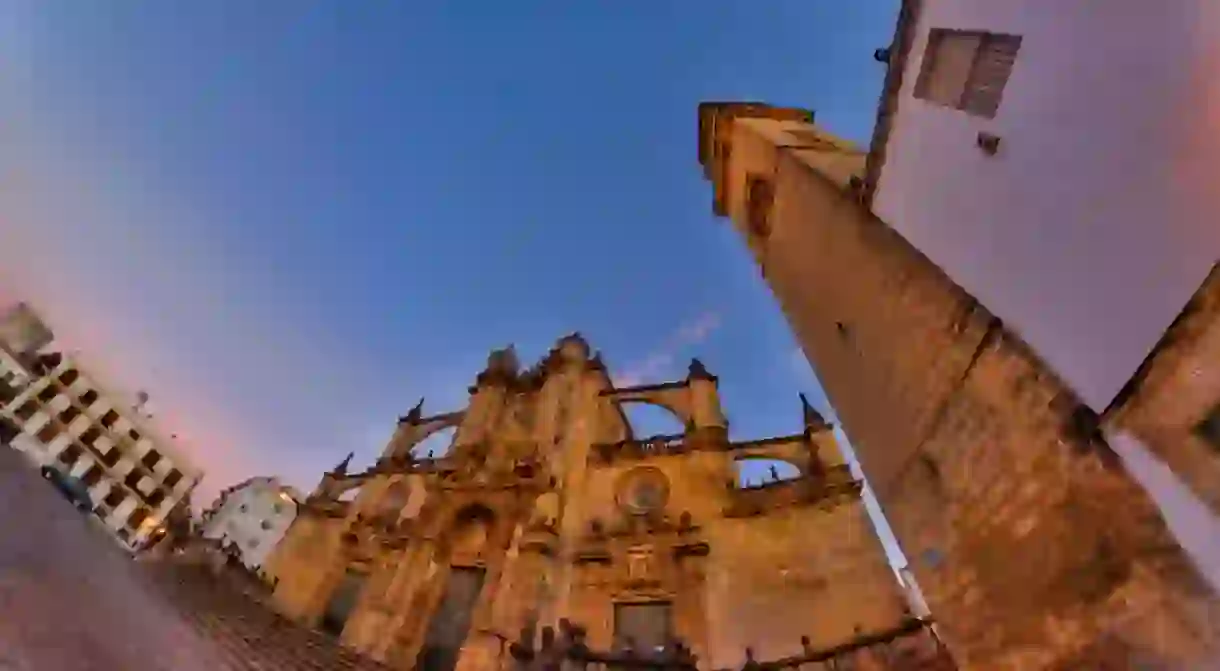The Most Beautiful Buildings in Jerez de la Frontera, Spain

As you’d expect from one of the most attractive cities in southern Spain, Jerez de la Frontera is full of eye-catching structures. Read on for our selection of its most beautiful buildings, from the mighty Alcazar to the stately old town hall.
Cathedral
Church

Although its construction dates from between 1695-1778, the San Salvador cathedral in Jerez only became the seat of a bishop in 1980 (prior to then it served as a collegiate church). Its bell tower is detached, remaining on the site of the smaller church that was cleared to make space for the cathedral, and dates from two separate periods: the lower half, in Gothic-Mudejar style, is from the 15th century and the upper half was added in the 17th.
Alcazar
Building

Separated from the cathedral and Gonzalez Byass sherry bodegas by a tranquil park, the Alcazar is a reminder of Jerez’s period under Moorish rule (711-1264). The fortress dates from the 11th and 12 centuries and the mighty walls built to keep out Christian invaders remain largely intact. Other notable features are the octagonal and Ponce de León defensive towers, the Doña Blanca patio and the in-house mosque.
Bullring
Building

Jerez’s striking plaza de toros looks more like two separate structures stacked on top of one another rather than a harmonious whole. In fact, this is more or less what it is: originally dating from 1840, it was badly damaged by fires in 1860 and 1891, requiring extensive rebuilding both times. The bottom section is rendered in bold yellow and red – two of the bullfight‘s most iconic colours – and bears tiles that remember the most exceptional bulls to have been fought here.
Iglesia de San Miguel
Church

Officially registered as of historic and cultural importance (Bien de Interés Cultural) in 1931, Jerez’s San Miguel church was the grandest place of Christian worship in Jerez before the cathedral was built. The first bricks were laid in 1484, when dual Catholic monarchs Ferdinand and Isabella are thought to have comissioned its construction during a visit here. Work continued for two centuries, resulting in the combination of Gothic, Baroque and Renaissance styles we see today.
Permartin Palace (Flamenco Centre)
Building, Museum

The Palacio Permartin houses the Andalusian Flamenco Centre and is as of much interest as the museum inside. This elegant, two-storey building originally dates from the 15th century but received substanial remodels in the 18th and 20th centuries; its most notable feature is the internal quadrangle, which is surrounded by pristine marble archways and decorated in Baroque and rococco styles. This space is sometimes used for live flamenco shows and exhibitions.
Iglesia Dionisio
Church

Occupying the eastern side of the beautiful Plaza de la Ascunción (a great place for drinks and tapas) is the gracefully ageing century Iglesia Dionisio. The structure features a 15th century Gothic-Mudejar exterior and a Baroque interior dating from the 18th century. Of particular note is the Atalaya tower: although attached to the main building, it was originally built in the mid -1400s as a watchtower and as a home for the town clock, rather than for any religious purpose.
Antiguo Cabildo
Building

For a small square, Plaza de la Ascunción is rich in architectural interest: sitting right next door to the Iglesias Dionisio is the Antiguo Cabildo, or old town hall building. Built under the guidance of two prestigious local architects in 1575, it boasts a beautiful Renaissance facade, which gives way to a series of elegant stone arches on one side. Your eye is drawn to the statues of Julius Caesar and Hercules on either side of the entrance, and relief depictions of the virtues supposedly possessed by the city’s governors.













